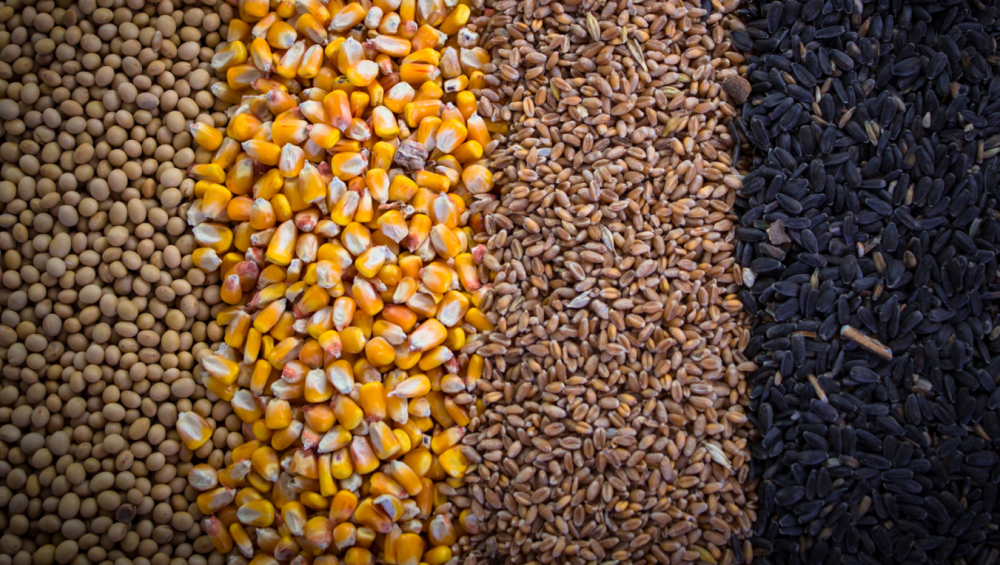CBOT is the acronym for the Chicago Board of Trade, which is a futures exchange that was founded in 1848 in Chicago, Illinois, USA. CBOT is one of the oldest and largest futures exchanges in the world, with a long history of trading in agricultural commodities such as corn, wheat, soybeans, and livestock.
With commodity products as one of the exchange highlights, CBOT allows food and beverage or commodity companies to manage their price risks. Similarly, speculators are also able to participate in the exchange and provide liquidity to the market. Alternatively, DCE offers various commodity alternatives such as soybean meal, soybean oil, and soybean no 1/2 which were approved by the China Securities Regulatory Commission (CSRC) on 26 December.
To cover more about the specifications of CBOT’s market, this article will provide recent news about the product as well as the fundamentals of the industry.
Corn Futures Contract Specifications
The Corn Futures has the following specifications:
The contract unit for the Corn Futures Contract is 5,000 bushels, with a minimum price fluctuation of ¼ of one cent (0.0025) per bushel/$12.50.
The listed contracts are on the months of Mar, May, Sep and 8 monthly contracts of Jul and Dec, listed annually after the termination of trading in the December contract of the current year.
Trading Hours are from Monday to Friday, at these trading hours:
8:30 am – 01:20 pm (CT)
Or Sunday to Friday:
7:00 pm – 7:45 am
Corn Contract Symbol,
CME Globex: ZC
CME Clearport: C
Clearing: C
TAS: ZCT
CBOT Price Limits
Price limits are restrictions that are placed on the trading of financial instruments. The mechanism sets a price threshold on the upper end of a price or a lower end of a price, which restricts the market from moving too far in a specific period.
From CME, the price limits are calculated twice a year. Prior to the resetting of price limits, daily futures settlement prices for each product are collected and averaged over a 45-day period, as stipulated in each product’s rulebook chapter. The average is then multiplied by a specified percentage and applied for the next six months.
For example, the rate of commodities such as corn and lumber are 7% and 5% respectively, and each rate is determined by the historical price change (averaged price) as indicated in the above calculations.
In addition to price limits, expanded price limits are another form of limits, these are approximately 50 percent higher than daily price limits and are triggered when two or more futures within the first five to eight contract months and are included as listed non-spot contracts settle at the limit.
It’s worth noting that price limits are just one tool used by CBOT and other exchanges to help ensure fair and stable trading. Other measures, such as circuit breakers, position limits, and margin requirements, may also be used to help prevent market disruptions and protect investors.

Market News
Corn and wheat are two of the most important crops grown globally, and their prices are affected by a variety of factors, including weather conditions, global demand and supply, and government policies.
US
From Hellenic shipping news, “CBOT’s corn futures set a six-week low on Friday while wheat hits its lowest level in more than four weeks on concern over competition for global export business.”. In general, CBOT corn contracts closed 10 cents lower at $6.49 – ¼ per bushel and hit their lower price since Jan 10. Wheat settled down 28 – ¾ cents a $7.21- ¾ per bushel and hit its lowest price since Jan 23.
CBOT corn ended at $6.83 per bushel Friday, up 5% from the month’s low and stronger than the year-ago $6.36. Both corn and wheat futures found late-week strength over potentially re-escalating tension in the Black Sea.
China
Apart from the US, CBOT has also anticipated that “A China recovery in 2023 is likely in the cards” after it clears the resurgence in Covid cases, overall, it is expected that the growth rate could rebound to 5% or 6% in 2023, then settle back in 2024.
For the week ending 17 February, the spot price remains running stably, on February 17, the spot price was 2868 yuan/ton, up 0.7% week-on-week. In the futures market, the 05 contracts followed the 03 contracts after briefly falling below 2800 yuan/ton. Affected by the rebound of the strong support from the cost line, it had also become the new main contract, as of February, the closing price on the 17th was 2868 yuan/ton.
Supply
This week, grain sales continued to increase steadily, with a 59% sales increase in the northeast region and a 61% sales increase in China. It is expected that the sales pressure from grassroots grain sources may continue until March, which will put greater pressure on the current price and the nearest-month contract prices.
From the perspective of substitutes, in March, rice auctions were open, and the auction is likely to cause negative impacts on the 05 contract. However, it is estimated that the fundamental bearish impact is not large, and it is expected that there will still be 18 million tons of rice. While it falls within expectations, in comparison to the 44 million tons of exports and 30 million tons of exchanged volume, the amount has been significantly reduced.
In terms of import supply, it is expected that the increase in US corn imports in the first half of the year may be moderate when the US corn production reduction is set, moreover, high costs of fertilizer in 23/24 will not be conducive to the growth of corn planting area.
Start Trading with Orient Futures Singapore
Being an Overseas Intermediary of Shanghai International Energy Exchange (INE), Dalian Commodity Exchange (DCE), and Zhengzhou Commodity Exchange (ZCE), when foreign clients participate in internationalised futures contracts in these Chinese markets with us, they have direct access to trading, clearing, and settlement. Our parent company, Shanghai Orient Futures, is the largest broker in terms of aggregated volume across the five regulated exchanges in China.
Orient Futures Singapore also currently holds memberships at the Singapore Exchange (SGX), Asia Pacific Exchange (APEX), and ICE Futures Singapore (ICE SG).
We provide premium customer service at an affordable cost to all our clients. Our team will be there for you 24 hours on trading days to provide a one-stop portal for all your trades, with simple processes and an intuitive user interface that has low or near-to-zero latency.




